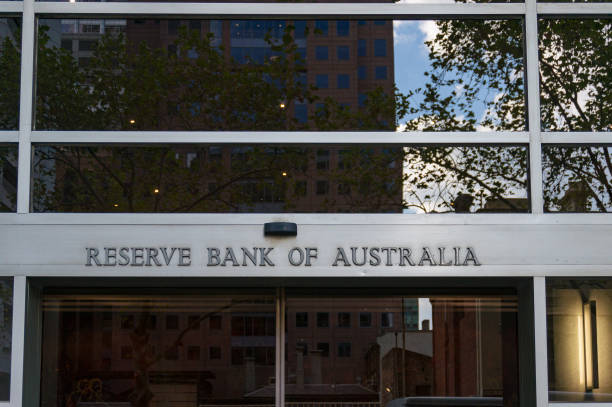Products You May Like
RBA will likely use the opportunity of the upcoming meeting to prepare the market for more monetary easing in November. The stimulus measures due later this week should include reduction in the cash rate, yield curve control (YCC) target and Term Funding Facility (TFF) rate to 0.1%, from the current 0.25%. The central bank, also in November, will expand asset purchases on 5-10 year bonds in order to lower the long-term yields and curb the appreciation of Australian dollar.
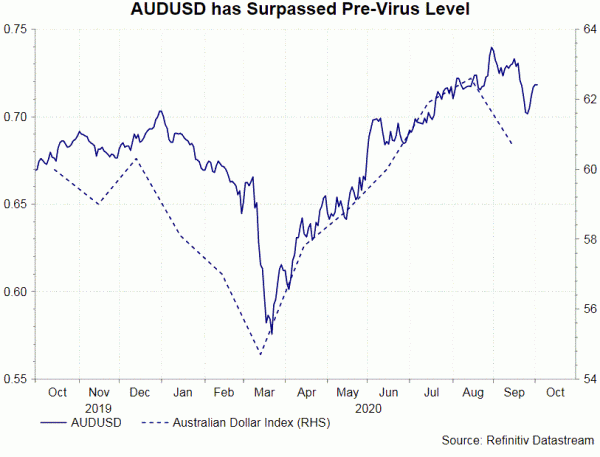
At a speech two weeks ago, Deputy Governor Guy Debelle hinted more easing is on the way as “the outlook for inflation and employment is not consistent with the Bank’s objectives over the period ahead”. On the economic outlook, Debelle noted that the recovery “has not been a rapid bounce but more of a slow grind” and the “shortfall in demand will be a significant brake on the recovery”. The Deputy did not see “any risk of a sustained rise in inflation while there remains considerable spare capacity in the economy”. He also acknowledged that the “high unemployment rate will mean that wage growth, which was not strong pre-pandemic, will remain subdued”.
– advertisement –
Economic data released since the last meeting largely echoed the outlook of the Deputy: the recovery remained in progress but at a slow pace. The unemployment rate fell to 6.8% in September, from 7.5% in August. The number of employment increased +111K, compared with 114.7K addition in August. The rise was, however, better than consensus of a -50K decline. PMIs signaled that both manufacturing and services activities returned to expansion last month. The manufacturing PMI improved to 55.5 in September, from 53.9 a month ago, while the services PMI climbed +1.9 points higher to 50 during the month. The composite index improved to 50.5 in September, from 48.8 a month ago. Retail sales contracted -4% m/m in August, following a +3.2% growth in the prior month. While this came in better than consensus of -4.2%, the contraction evidenced subdued household consumption, probably as a result of weak wage growth.
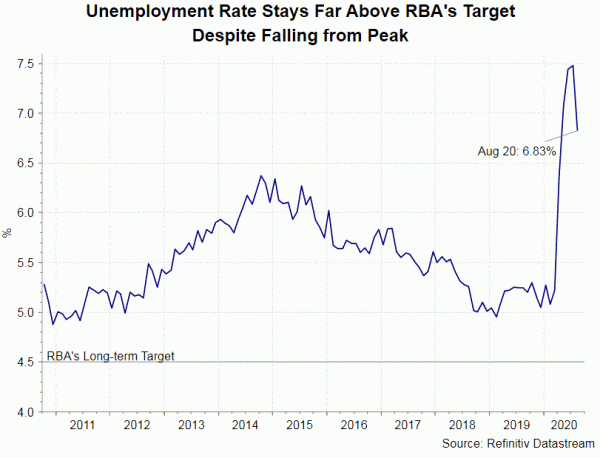
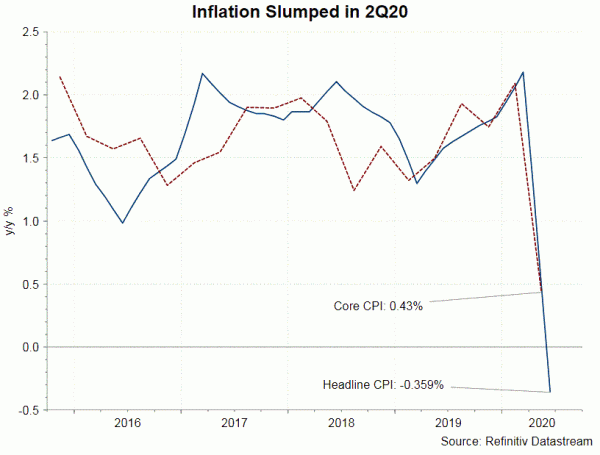
The four monetary options that Debelle laid out at the speech include 1) bond purchases further out along the yield curve, supplementing the three-year yield target; 2) intervention in the foreign exchange market to lower the AUD; 3) lowering the current structure of interest rates in the economy a little more without going into negative territory; and 4) negative interest rates. We believe the central bank leans towards options 1 (QE expansion) and 3 (rate cut without adopting negative rate). Concerning QE, Debelle noted that “very few financial instruments in Australia price off” long-term rates. He suggested that additional bond purchases would lower longer-term interest rates, resulting in portfolio balance and lower exchange rate. He added that “the current level of government bond rates is not a constraint on the fiscal decisions”. On further rate cut, the deputy indicated that “the remuneration on ES balances is currently 10 basis points, the three-year yield target is at 25 basis points and the borrowing rate of the TFF is also 25 basis points. It is possible to further reduce these interest rates”. Concerning option 2 (FX intervention), Debelle doubted its effectiveness in the current circumstances”. For option 4 (negative rates”, he noted that “empirical evidence on negative rates is mixed”.
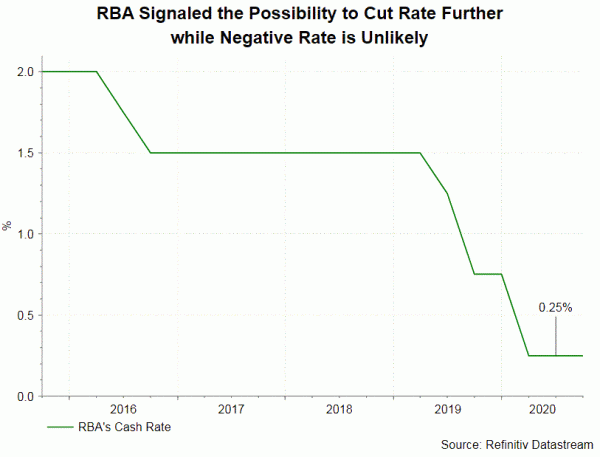
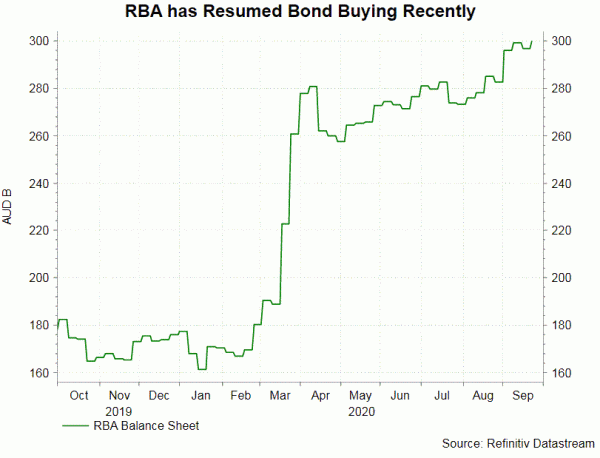
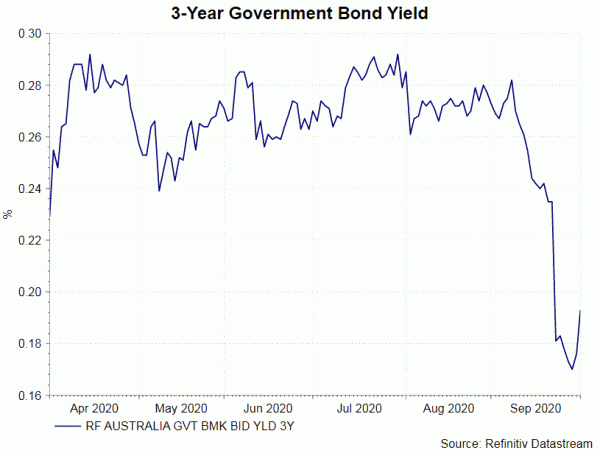
Also worth attention is the Budget Day, which coincidentally is scheduled on the same day as the October monetary policy meeting. More stimulus measures in the form of higher spending and tax cut are expected to be announced in order to boost economic growth.

